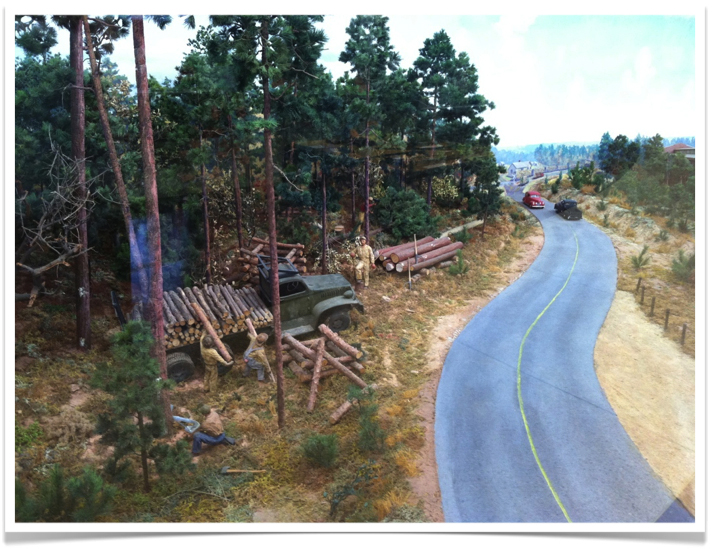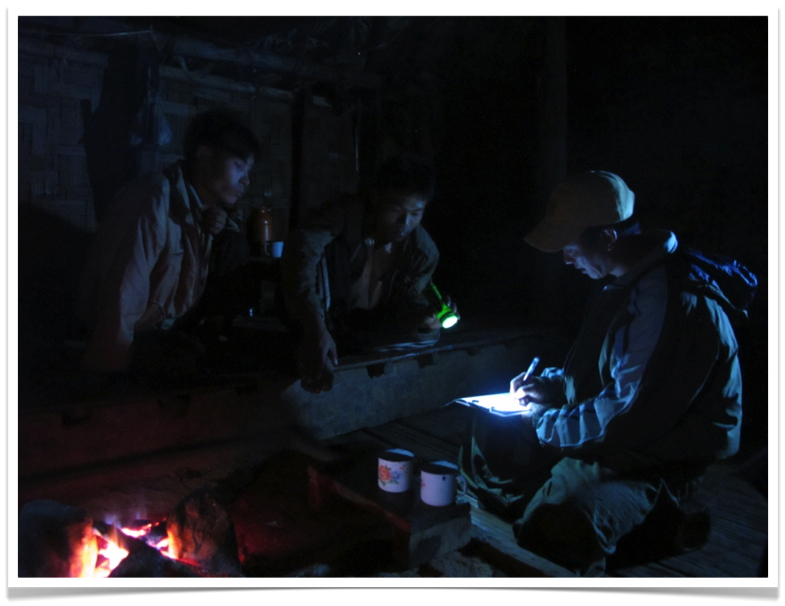Entries from October 1, 2014 - October 31, 2014
Repairs
 Thursday, October 16, 2014 at 2:40PM
Thursday, October 16, 2014 at 2:40PM
Here We Go Again
 Tuesday, October 14, 2014 at 11:56AM
Tuesday, October 14, 2014 at 11:56AM Packing the duffel (see Duffel Bag). Back to Yangon, then Mandalay, then Homalin, then a long boat ride to Htamanthi, and, finally, a short boat ride to Nam Sa Bi. Twenty-five days of community forestry in the Upper Chindwin. [NOTE: Goes without saying, but I love my job].
All Melody/#2
 Monday, October 13, 2014 at 9:48AM
Monday, October 13, 2014 at 9:48AM Route Set
 Friday, October 10, 2014 at 10:28AM
Friday, October 10, 2014 at 10:28AM 
Oldest son, Case (see Case and Phaeroom and Bouldering), is back setting routes at the Go Vertical Indoor Rock Climbing Gym in Philadelphia. [NOTE: And very happy about it].
Back To Nam Sa Bi
 Thursday, October 9, 2014 at 5:01PM
Thursday, October 9, 2014 at 5:01PM 
Got my visa–or e-visa, I should say–and all systems are go for my trip back to the Upper Chindwin next Tuesday. Laying out a Village Management Area (VMA) in the buffer zone of the Htamanthi Wildlife Sanctuary, clearing transect lines, setting stakes, sloshing around in streams, correcting for slope, and trying not to fall down. Should be great fun and I am very much looking forward to getting back to work with my friends from Nam Sa Bi (see Nam Sa Bi Field Crew).
 Htamanthi Wildlife Sanctuary,
Htamanthi Wildlife Sanctuary,  Nam Sa Bi in
Nam Sa Bi in  Science |
Science |  Share Article |
Share Article |  Email Article |
Email Article |  Print Article
Print Article Pulpwood Logging
 Wednesday, October 8, 2014 at 9:18AM
Wednesday, October 8, 2014 at 9:18AM 
A close-up of one of the wonderful dioramas at the Louisiana State Exhibit Museum (LSEM) in Shreveport. Shows an early (1930's?) logging operation in a stand of loblolly pine (Pinus taeda L.). The workers are loading pulpwood (for paper) on the truck and five sawlogs have been stacked by the road. Amazing amount of detail here. [NOTE: There are 22 dioramas in the musuem, each depicting some aspect of Louisiana’s agriculture, technology, and natural resources during the Depression era. The displays were produced by a team of local artists and model builders under the direction of diorama artist, Henry B. White].
Building the Hermitage
 Thursday, October 2, 2014 at 9:30AM
Thursday, October 2, 2014 at 9:30AM 
Over eight years ago I built a little cabin in the Catskills (see Hermitage). Great fun and a lot of work. A wonderful place to spend a fall or winter evening reading a book of Chinese Zen poetry and sipping a cup of tea. While the wood stove roars. Fondly thinking about those evenings now that the weather around here is starting to cool off. [NOTE: That's a People and Plants International cap hanging on the pole with my shirt. A collectors item].
 Catskills,
Catskills,  cabin in
cabin in  Art,
Art,  Dharma,
Dharma,  Other,
Other,  Science |
Science |  Share Article |
Share Article |  Email Article |
Email Article |  Print Article
Print Article Resource Needs Assessment
 Wednesday, October 1, 2014 at 9:53AM
Wednesday, October 1, 2014 at 9:53AM 
Gumring Jungkum (WCS Myanmar Program) takes notes during a Resource Needs Assessment (RNA) interview in Tikon (see Faces of Tikon and Three Jumps to Tikon). As is shown, most of the interviews were conducted by flashlight at night when people had returned home from their fields; welcome cups of hot tea were routinely provided by the households.
The RNA interviews are used to document the species and quantities of plant resources that households harvest from the forest each year, i.e. the demand. These are followed up with transect inventories to quantify the density and size-class distribution of each resource, i.e. the supply. Management planning is then undertaken together with the villagers to see what can be done to balance supply and demand and move local patterns of resource use to a more sustainable level.
[NOTE: If all goes well (visas and stuff), I should be heading back to the Upper Chindwin on October 14].
 Gumring Jungkum,
Gumring Jungkum,  Resource Needs Assessment,
Resource Needs Assessment,  Tikon in
Tikon in  Science |
Science |  Share Article |
Share Article |  Email Article |
Email Article |  Print Article
Print Article 




